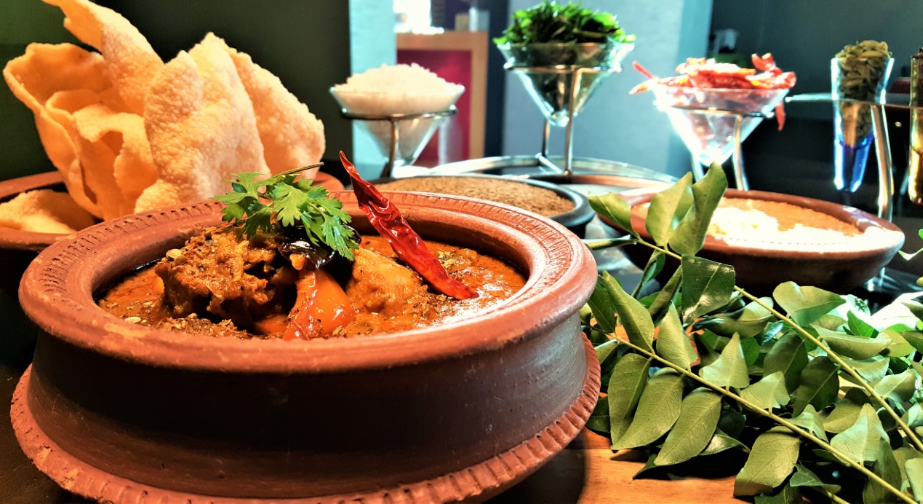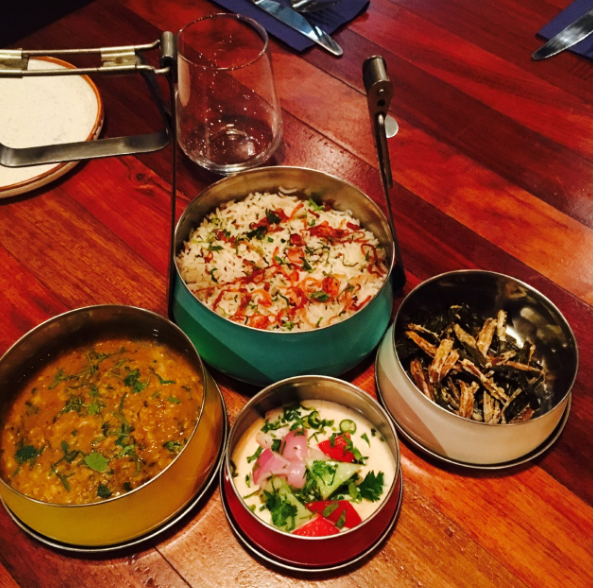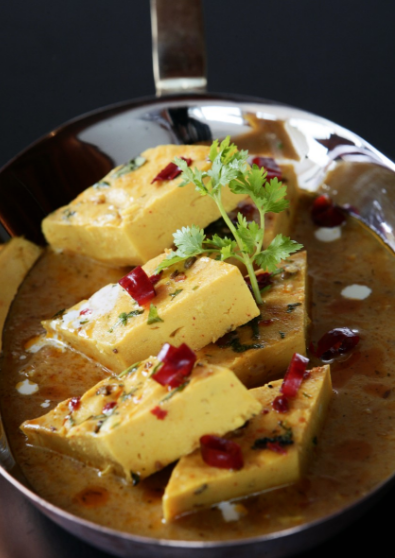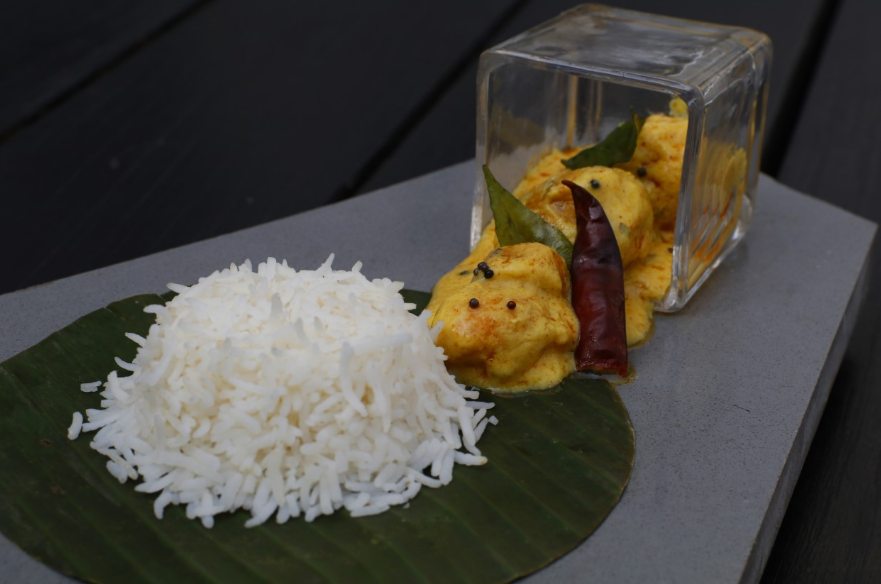Seasoning your food can add a zing like no other and if there is one seasoning that can immediately change the taste of your food, the hands down winner is asafoetida. Asafoetida known as ‘food of the gods’ is a dried gum extracted from the taproot of a herb plant called Ferula which grows perennially. The word asafoetida is a semantic meeting of East and West and aza signifies “sap” or “mastic” in Persian and foetida means “stinking” in Latin. “Asafoetida has remained a part of the Indian spice box for quite a long time and keeps on being utilized both in cooking and in solution in India. Its use in old home grown medication dates to the 7th century B.C. It is used extensively in a variety of cuisines and it also has balancing properties,” says a spokesperson from Bodega Cantina-Y-Bar, Kolkata. One of the most expressive sayings in India is the phrase, ‘Hing lage na Phitkari, rang bhi chowka aeh’’, meaning, ‘to have a gain without much effort, emphasize the characteristics of the asafoetida.’ Chef Vikas Pant, Radisson Blu Paschim Vihar explains, “asafoetida is also use as a substitute for no onion and garlic food. Asafoetida is use for an added flavour and aroma. It smells best with ghee and is used as a digestive also.” Chef Vicky Ratnani, Head Chef, The Korner House adds, “hing was actually found around Iran and Persia, the spice was supposed to be considered with meat and considered yogic to eat. Also, Hing is reminiscent of onion and garlic and is therefore used while cooking during a fasting period. Kashmiri Hing is the best in our country.”
Kashmiri Pundits use asafoetida in Haaq Saag, Nadir Gaad, Dum Olav, and a popular dish in Uttar Pradesh, called Hing-jeera Aloo, uses it as the primary spice component. “It is also added to Bhutte Ki Khees, a much-loved dish in Madhya Pradesh. In Rajasthan, this spice is used for tempering while in Bengal, it is used extensively in different fish preparations. The South Indian cuisine uses this spice for almost all dishes especially vegetarian including Sambar, Rasam, Pappu, among many others,” says Chef Saurabh Udinia, Chef de Cuisine – Modern Indian, Massive Restaurants Pvt. Ltd. The Indian dishes where the spice finds use are in dal and pickle tempering, sambar, rasam, cheewra, fish curries, dishes without onion and garlic. Ashvini Kumar, Executive Chef, Four Points by Sheraton Navi Mumbai, says, “in India, it is widely used in Karnataka cuisine, Gujarati cuisine and Tamil Nadu cuisine, which is mainly vegetarian, and is frequently used to tone sweet, sour, salty and spicy components of food.”
There are two main varieties of asafoetida Hing Kabuli Sufaid (creamy white asafoetida) and Hing Lal (Red asafoetida). Chef Sharad Dewan, The Park Hotels avers, “raw asafoetida has a very pungent and an unpleasant smell which is why it is also known as stinking gum. It gives a very smooth flavour when added to cooked dishes. The white variety is water soluble and the other variety is oil soluble. Pure asafoetida is not chosen due to its physically powerful flavour; it is assorted with a starch and a stick of gum and sold as compounded asafoetida and is also available in powder form.” In the field of cooking, it is a necessary ingredient of Worcester sauce and also used to flavours a broad collection of dishes and drinks. It is popular in the normal food cuisine as a garlic substitute so is popular with Brahmins and Jains who do not eat onion and garlic. The resin obtained from this plant is most likely the foulest smelling of all herbs. However, in sensible quantities it gives an astonishingly agreeable flavour to a lot of foods. Asafoetida has a wide range of application in the field of medicine and has antibiotic properties due to which it is used to keep small children healthy. Dr. Arun Aravind, Head – Spa Niraamaya Retreats explains, “it is packed with immense health benefits and helps fight problems related to digestive health, nervous system, heart, blood pressure, respiratory system, skin and many more. Mix Asafoetida powder with buttermilk it’s an age old remedy for bloating. Add a pinch of Hing powder in at least one meal of your day as it prevents digestive ailments, reduces flatulence and helps in irritable bowel syndrome. Asafoetida decreases the cholesterol absorption in the gastrointestinal tract which results in reducing cholesterol levels in the blood.” Chef De Cuisine Ashwani Kumar Singh of The Leela Ambience Convention Hotel, Delhi adds, “hing aids digestion and is known to have natural antimicrobial properties and helps in fighting the flu, coughs and colds.”
Asafoetida compliments most commonly used Indian vegetables. Whether making a more involved vegetable curry or a simpler sauté a pinch or two added at the beginning will go a long way. It is vital to keep asafoetida in airtight containers as its sulphurous odour will affect other foods and spices. “Sometimes, it is fried along with sautéed onion and garlic. Since it is always cooked in fat first, adding the powder to the preparation just before turning the heat off and putting the lid on or adding water in which a piece of asafoetida has been dissolved to the preparation before putting the lid in the end, its yields a full, smooth, and satisfying mouth feel that you may not be able to pin down but would miss if it wasn’t there,” says Chef Lakhbir Singh Chahal, senior chef de cuisine at Shangri-La Hotel, Bengaluru. Swasti Aggarwal, Food Strategist, Foodhall, adds, “asafoetida is an important ingredient of the snack called cheewra – a mixture of grains, dried fruits, and spices. One can use in minute quantities, adding directly to cooking liquid, frying in oil, or steeping in water.” As it is rightly said, “in the art of cooking, seasonings are the magic ingredient without which many culinary creations are dull and flavourless” and this could not ring truer for asafoetida.
HING TIL KE CHATPATE ALOO RECIPE BY SANDEEP KUMAR, EXECUTIVE CHEF, ALOFT BENGALURU CESSNA BUSINESS PARK
Ingredients
Potatoes 322 gm
Oil 10 gm
Sesame 5 gm
Turmeric Powder 5 gm
Green Chili 5 gm
Salt 6 gm
Fresh Coriander 10 gm
G.G paste 5 gm
Onion tomato masala 80 gm
Hing 1 gm
Method
First boil the potatoes with the skin. Peel the potatoes and split them in half.
Heat mustard oil, add cumin seeds and asafoetida. Add coriander powder, turmeric powder, yellow chilli powder, curry masala, chopped ginger and green chillies.
Add potatoes. Add salt, black salt and lemon juice. Add some sesame and crushed black pepper. Top with fresh coriander leaves and serve
This story appeared in the March 2017 issue of Spice Route magazine here: Asafoetida-Spice Talk




